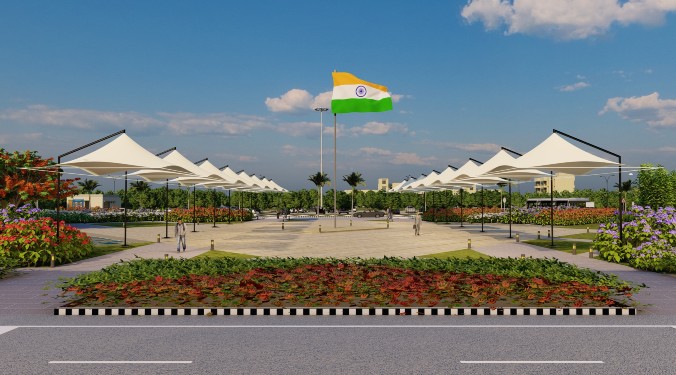“IL&FS would be uniquely positioned to harness opportunities in structuring, mobilisation and management of both equity and debt linked assets in the infrastructure sector,” says Ram Walase, CEO, Infrastructure Leasing & Financial Services Ltd. (IL&FS)
Over the past 25 years, IL&FS Group has pioneered the concept of public-private partnership (PPP) arrangements for infrastructure in India and implemented projects in almost all infrastructure sectors such as telecom, power, roads ports, industrial parks, water supply, power, airports, sanitation, education and urban development. In an exclusive interview with ACE Update, Ram Walase talk about overall infrastructure industry and how to handle infrastructure projects.
Since IL&FS started its journey in 1987, a lot has changed in the infrastructure segment in India. How has the infrastructure sector evolved since then?In the pre-liberalization era, the commercial development of infrastructure assets was an unknown concept in the Indian context. It has taken a lot of capacity building amongst the stakeholders including governments, financial sector, developers and more recently fund managers and investments banks to reach the current state of the infrastructure industry.
Over the past 25 years, IL&FS has played a pioneering role in policy advisory, project financing and implementation of infrastructure projects through PPPs in almost every infrastructure sub-sector. Some of our projects have created new standards for scale, quality and upkeep of the infrastructure in India.Over the years, the industry has witnessed a few stray instances of opposition to pay user fees or tolls, but in general the public has come to appreciate the quality and scale of infrastructure projects under PPPs.
The infrastructure PPPs have been substantially leveraged assets and the banks and financial institutions have played a significant role in extending credit to the sector. Consequently, in the last few years, they have suffered on account of the inadequate performance of the sector. We believe this difficult credit period will pass as the sector picks up and the banks learn from their experiences and improve credit their review mechanisms.There is still a large gap in demand and supply of infrastructure. There can be many models of infrastructure implementation to meet this demand, but the PPPs cannot be ignored for their role in setting up new benchmarks for quality and scale, mobilising private capital and motivating professional expertise in delivering innovation in the sector.
What are the trends and opportunities in the infrastructure market?The PPPs had slowed down in the recent past, and the limited availability of new equity and bank credit for the sector had accentuated the problems for the sector. The new government understands that the growth of infrastructure would need to be a precursor to the success of programmes such as ‘Make in India’ and to the growth of other sectors. We believe that the government will make concerted long-range efforts to boost infrastructure growth.
Of the estimated $1-1.5 trillion investment requirements in the sector over the next 5 years, almost 50 per cent is expected to be mobilised through private sector with a large part of this going to the traditional PPP favourites such as energy, transport and logistics and telecom.
With appropriate policy initiatives, the relatively new sectors such as railways, defence and security infrastructure (shipbuilding etc.) and subsidised housing for urban poor, government employees and security forces could witness rapid growth.
Now that the Cabinet has approved a central outlay of ` 98,000 crore to execute the Smart Cities and AMRUT mission. How do you look at this opportunity?India is rapidly urbanising and the pace of urbanisation will only increase as more jobs will be created in services and manufacturing. The two programmes announced by the government will provide a substantial opportunity for the infrastructure players.
Since states and urban local bodies (ULBs) are expected to mobilise matching resources ranging from 50-66 per cent of the respective project costs, these two programmes would create an estimated investment of about ` 2 lakh crore into urban areas over the next 5 years. In addition, some private investments would be mobilised by states and urban local bodies through PPPs – though PPPs in the urban infrastructure have been limited, primarily on account of difficulties in spatially spread projects in the old or sometimes encroached upon urban areas and lack of bankable earmarked revenue streams with ULBs.
These new programmes aim to enhance competitive spirit amongst the cities and hopefully they would promote more innovation and PPPs in urban infrastructure. In the immediate future, we foresee PPPs in waste management, urban transport and housing. In the long run, PPPs could play a larger role in O&M of urban utilities, government buildings, housing stock and in provisioning of city services on the lines of passport seva kendras.
How do you approach when you handle an infrastructure project?IL&FS has over the years internalised the process of conceptualisation to commissioning and O&M of infrastructure assets. We pay substantial attention to project structuring to ensure that the risks are distributed to the partners best placed to handle them. Our financial services team actively contributes this process so that the projects under consideration pass bankability tests even before we bid for them.
Project execution teams are manned by passionate project managers and engineers with adequate empowerment to deliver projects to the desired cost, quality and timeframes. They are provided with additional support in terms of conflict resolution and stakeholder management and in handling environmental and social risks.
Given the varied nature of the sector, the pilot or first project in every sub-sector provides unique experiences and thus enabling new learning’s and strengthening the collective capability of the IL&FS group.
IL&FS is also an investment company with significant and controlling interest in financial services space? What are the criteria you look before you decide to finance any project?Yes, we do operate across the spectrum of financial services, including structured and project finance, debt syndication, private equity, infrastructure debt fund and other pooled debt facilities. The in-house implementation experiences help us in assessing the project risks thoroughly and structure our financing products more efficiently.
Adequate mitigation of contractual risks in the concession agreements, adequacy of project revenues, charge on project assets, escrow mechanisms for ring fencing of project cash flows, acceptable asset cover and top-up collaterals and commitments from the promoters are some of the primary criteria for debt investments. In case of equities, in addition to all or some of the above, the minority protection rights, exit mechanisms and a say in governance and management of the projects or companies play a crucial role in the investment decisions.
Where should you position IL&FS in the current infrastructure market?Given its experience, IL&FS could continue to play pioneering private partner’s role in emerging sectors such as smart cities through pilots like GIFT City and expand its presence in the existing sectors such as transportation. As the portfolios in the individual sub-sectors mature, it would create opportunities for value unlocking for the group and thus releasing more capital for growth of the emerging sub-sectors.
In the financial services, apart from its presence in proprietary investments and private equity fund management, IL&FS has been inventive in debt distribution, municipal debt financing and other structured debt products. As the debt markets in India develop and new models of infrastructure financing emerge, IL&FS would be uniquely positioned to harness opportunities in structuring, mobilisation and management of both equity and debt linked assets in the infrastructure sector.
Cookie Consent
We use cookies to personalize your experience. By continuing to visit this website you agree to our Terms & Conditions, Privacy Policy and Cookie Policy.









